Cerro Lopez, Bariloche, Argentina
22 December 2008
A condor. It has to be. The bird I’m looking at is absolutely the biggest animal I’ve ever seen in the air. It’s hard to tell how big, and as soon as that thought enters my head, the nearly stationary bird soars directly towards the hillside I’m standing on.
I first fumble for my binoculars, then for my camera. When the condor gets within maybe one hundred meters of me, it stops and floats on a thermal draft, motionless for the length of time it takes me to raise my simple camera. Then it soars off again, and I snap off a single blurry photo. The Andean condor looks like the dinosaur that it is, a relic of a bird, too big and vulnerable to live in the Age of Man, Machines and Pokemón.
The sun is out; the storm over. I’m overdressed now, in my new heavy fleece and old windbreaker. I’m at the beginning of a two hour trek up the side of Cerro Lopez, alone on the trail. Cerro Lopez is one of many easily accessible mountains ringing Lago Nahuel Huapi.
I had spent the previous day planning this hike. Bus routes, maps, a little food and water, and uncertain Argentinian Spanish conversations about where I’d be hiking. I relied on an organization housed in a little cabin at the center of the city called Club Andino, which is a private club advising trekkers, maintaining trails and running the refugios (mountain shelters) that anchor many of the more popular trekking routes in the area.
Armed with the info I had gathered, I had successfully navigated the right bus line, and had jumped off a bus only 20 minutes before I spotted the condor. The passenger loading and unloading of these buses happens so fast. Outside the city centers, they slow and the rear door opens long before the bus stops. But when it stops, you jump off quickly, because the instant the stops, it roars back onto the road. Many people jump off before the bus even stops. If you’re carrying a backpack or a bag, you almost have to leap off, like a skydiver, to get on the ground before the bus starts moving too fast again. And the stops aren’t marked – some are just random spots in the road it seems. It’s comical to watch other tourists try and figure out when to jump off. Until it’s my turn.
But I was successful with the bus exit, and after walking up a the steep beginning of the foothill, I’m standing on the path to Lopez, with great views of Nahuel Huapi, the surrounding mountains, and a series of islands in the lago. I can’t see Bariloche from here – too far.
Not quite believing my condor luck, I walk on.
If I squint, the dirt and trees and mountains look a little like those on a California mountain trail, but up close, every plant is different, the trees unidentifiable, the birds downright strange, and the dirt a weird red-yellow.
I steam onwards at a good clip, because the folks at Andino told me it would take 3 or 4 hours to get to my planned turn-around point, Refugio Lopez, and even though I started early, I want to be sure to get back and catch a bus since they run infrequently late in the day.
I cross a snowfield, wind around from one ridge to another, and less than two hours, I’m there. Refugio Lopez is a brightly painted pink building, sitting in isolation on the rocky side of the start of the real Cerro Lopez mountainside. The trail behind the refuge turns from worn footpath to simple paint-marks on the steeply rising rockpiles, cascades and jagged and exposed outcroppings that make up Lopez proper.
Entering the refuge, my impression is of a place that is part backpacker’s hostel, and part mountain survival hut. It’s informal, cozy, primitive. Someone from Andino is always on hand. You can ask for a sandwich or a pizza, which they make on the spot. Or pay for kitchen privledges and make your own. You can also pay for toilet privileges, a rustic experience to be sure. The simple benches and the bunks upstairs can be used to sleep on, and I think they even have sleeping bags for rent.
The view from the shelf that the refuge is built upon is fantastic. I sit and have a ham sandwich made for me on thick, homemade bread. I squeeze mayonnaise out of a mustard bottle onto the sandwich. Drinking water from a battered plastic cup and looking out the back of the refuge, I see the source of the water in my hand: a blue plastic tub lashed to the mountain side next to a melt water cascade. The water flows from that tub into a cistern next to the refuge, apparently unfiltered and untreated (This would never happen in the Lower 48 – the risk of parasites like giardia is too prevalent. Here, no one in the refuge knows what I’m talking about, even through the trail leads directly and repeatedly over the watershed that we drink from. Oh well.)
Three young Argentine men are getting a late start, having broken camp a 100 meters away a little earlier, now taking advantage of the refuge before hitting the backpacking trail. They are friends from primary school, I gather. They befriend me as I walk around the refuge, exploring it. They speak pretty good English. I’m amused to watch them wrap plastic bags over their socks before putting on tennis shoes to trek. One of them strums a little mandolin that belongs to the refuge.
At their invitation, I decide to press on with them up the mountain a bit.
Duende. Didi. Nacho. Duende is the smallest of them, and they explain that his name – a nickname – means “dwarf” in Spanish, though I later learn that a better translation is perhaps “elf” or “genie”. We have a nice conversation as we scale the rockpile and cascades, their going slowed by their backpacks, and our conversation halting as we surmount rocks and languages, a little out of breath.
At the top, we have a drink and a snack, taking in the view. They had broken their camera earlier, so we take photos, and I promise to e-mail them copies. They are on a long trek to another lake, and I’m just a day tripper and have to descend the pile of rock we just spent an hour climbing. Standing up, we part ways. As I walk down, they caution me to be careful on the descent. Suddenly I’m conscious of our age difference, which I hadn’t been thinking about. They’re a good 20 years younger than me. I turn and assure them that I hike often and that they’re not to worry. As soon as they are out of sight, I immediately lose the trail. Dang. I spent a long time trying to find it again, descending for while, reaching an impasse, then climbing back up, and repeating all that again and again. Fortunately, the refugio is always visible, so I’m not lost, but from their view point, I probably looked like I was.
After I get past the refugio, I retrace my steps until I hit a fork in the path, and decide to the long way back, on a gently zig-zagging dirt road. Once again, I’m able to think for long stretches, the silence so strong that my ears buzz, picking up noises that aren’t there. A strange bee-like insect makes me think about how flying insects first developed that ability, and that segues into my line of thinking on the evolution of human consciousness, and what will follow in the next step of that evolution, and my small, potential part in that. During this stretch I don’t see anyone for an hour and a half. It’s not meditative, exactly, but very contemplative. I want to make these kinds of spaces for myself when I get back, I realize. Everyday life makes such a hubbub, even for a part-time worker, kid-free, solitary bachelor like myself, that large swathes of one's life can pass without much time for real reflection. That’s not what should happen in a well-lived life, and so I won’t let it.
Late in the afternoon, I pop out onto the main road where the bus runs, a zipline tour company at the junction. It’s filled with bands of Argentine kids wearing uniforms from the tour company that brought this band of kids here. These large groups of boisterous, but well-haved teenagers are everywhere in Bariloche. They’re noisy as heck, but without the aggression that any band of American teenagers would have. I don’t exactly enjoy their company as I sit, sweaty, drinking a canned beer, but and it’s a nice contrast to the SF teens I’m used to riding buses with.
After a long wait, I’m bouncing on the bus ride back. I’m a Bariloche bus an expert now. I had to stand on the way out to Cerro Lopez, but now I am able to grab a seat on the left side of the bus, where I know I’ll have great views of Nahuel Huapi. In Bariloche, I swing off with confidence one stop before everyone else does, knowing the town well enough to take a short cut. Happy with all I’ve seen, and all the contemplation I’ve gotten in, I look forward to another dinner at the tourist restaurant complex in Bariloche central, the town now decorated for Xmas and full of holiday travelers…
Tuesday, January 13, 2009
Refugio
Subscribe to:
Post Comments (Atom)


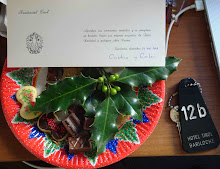














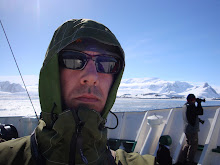




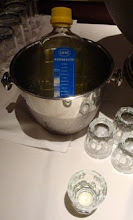
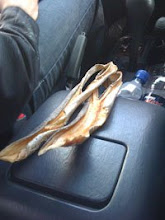








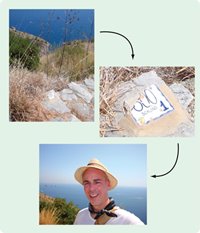




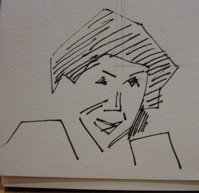









No comments:
Post a Comment